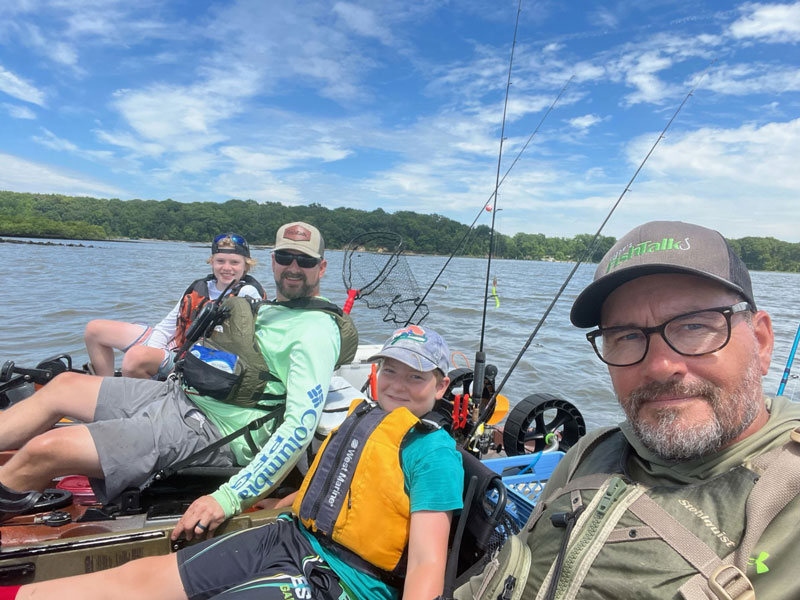Merriam-Webster defines Communication as: “a process by which information is exchanged between individuals through a common system of symbols, signs, or behavior.”

Over the years I’ve picked up a few fishing buddies. When I get a phone call or text, or have a casual conversation while loading out the kayak, it usually turns into being on the water and taking a cast somewhere with someone. I can’t express the importance of building a network of angling friends who have the same passion for fishing as you have. You can share ideas, locations, and information on baits, bites and when the runs are on. When we get out and start casting, not everyone is casting the same bait. If you get bit share that knowledge with those in your group and don’t forget to communicate the depth of the bite, too, because there’s nothing like getting half the information you need to keep up with the other guy.
Of course, this presents a problem when kayak fishing as opposed to fishing on a boat when passing on information to your fishing buddy is as simple as talking to the person next to you. There are communications breakdowns. As a collective group if you are on the water and on your kayaks, wading the shoreline, or working around a portage and need a hand, how do you communicate with your fellow angler while out in the field? We all know, or at least we should know, that talking loudly to a distant angler can scare the fish. And that sound carries across the water, too. But we can use several different means to communicate while out on the water.
What if you are catching and your buddies are nowhere in sight? Texting a photo of a fish you just caught is always a preferred method (and will make you smile inside, especially if you’re the first to catch). If you get a text in return with questions, answer. Sometimes a phone call is necessary to convey the information, but don’t forget to give all: the bait used, depth the fish was caught, speed of the retrieve, water clarity (yes water clarity may vary throughout a body of water and is an important piece of information), etcetera.
Another method that works well on big water like the Chesapeake Bay and large tributaries is the use of portable marine radios. Keeping a quality marine radio on hand is very helpful and not only provides easy communication between the group, but a means to communicate with the authorities in case of emergency. They are also helpful in checking the weather. Best of all, unlike many cell phones, they’re watertight and you don’t have to worry too much about them being damaged by the environment.
In place of portable marine radios Family Radio Service (FRS) units will work too. FRS handhelds are inexpensive radios that are used for short distance, two-way communication. They are limited in range, usually no more than two miles, and are essentially walkie-talkies.
On a few occasions we’ve used our paddles to communicate too, such as while shark fishing from the beach. When one of us paddles out to change baits on a line, the paddle can be raised vertically to signal when the bait has been dropped, so that the team members on shore know to take up line slack. With a bit of preplanning you can arrange signals like this with your fishing buddy — there are snakeheads over here, topwater is working, and so on — to communicate without making a sound.
Communication is a great tool in your tacklebox, so use it. But don’t speak up, because if I can’t hear you the fish can’t either.
-By Eric Packard